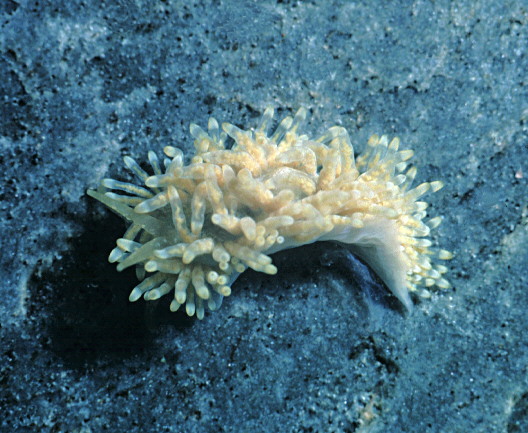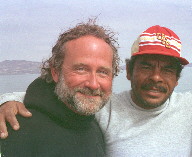
Phestilla lugubris
Phestilla lugubris Bergh, 1870
This eolid is quite specific on its prey item: corals of the genus Porites, where it is quite cryptic. Consider a photograph taken in situ in Hanauma Bay, Oahu, Hawaiian Islands; the egg masses are clearly visible. In the middle of the picture are the cups of the eaten coral polyps (slightly pentagonal in shape); and on the opposite side are 4-5 very well camouflaged Phestilla lugubris. They are so well camouflaged, I don't even know exactly how many are in the picture!
The basic body color is whitish, with yellow maculations and brown cerata cores. Rhinophores are smooth. The cerata have several swellings along their length, furthering their mimicry of the Porites coral polyps upon which they feed. Living animals average 10-20mm in total length.
Michael Hadfield and students at his Kewalo Basin (Ohau) laboratory have performed numerous experiments on the metamorphosis of this species from the fee-swimming veliger stage to the benthic adult.
Widely distributed throughout the indo-Pacific, it has been reported from Tanzania, Africa; Heron Island, Great Barrier Ree, Australia; Palau; Philippines; Indonesia; the Hawaiian Islands; and the eastern Pacific (Panama, the Galapagos Islands, and the central Gulf of California). I have collected this species in Tahiti and at Bahia de los Angeles, Baja California (at this latter locality, it is one of the 10 most common species I have recorded in over 5 years of regular data collecting.)
It has been reported to eat Porites lobata and P. compressa in Hawaii; I have found it eating Porites californica at Bahia de los Angeles.
Text and Photos courtesy of:

192 Imperial Beach Blvd. #A |
